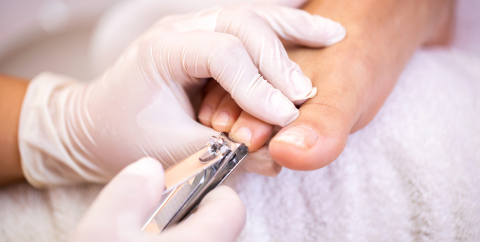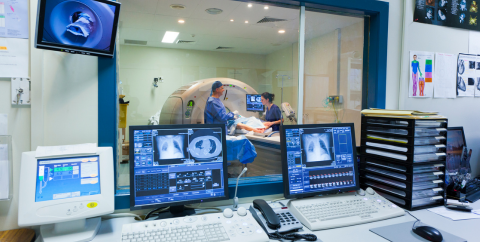The state of lung cancer in Nevada, 2025: Progress, setbacks and the road ahead
11 November, 2025
In Nevada, the landscape of lung cancer in 2025 shows a mixed picture. On one hand, some screening indicators ticked upward or held steady. On the other, the state regressed in critical areas of early diagnosis, treatment rates and surgery — putting Nevada further behind in the national effort to reduce lung-cancer burden. Here's a look at the State of Lung Cancer 2025 from a report by the American Lung Association:
What’s improving
- Nevada improved its ranking for lung-cancer screening: moving from 43rd out of 51 in 2024 to 42nd in 2025. Although still categorized as “Below Average,” it is a small step forward.
- The rate of new lung-cancer cases in Nevada remained low: the state holds 8th place out of 51 for new cases in both 2024 and 2025, in a category labelled “Above Average.”
- Two risk-factor indicators stayed unchanged – insurance coverage of comprehensive biomarker testing remains not required in Nevada, and radon exposure ranking (12th of 51, Above Average) and adult smoking (37th of 51, Below Average) remain focal points.
Where Nevada is falling behind
- Early diagnosis: In the 2024 report, Nevada ranked 46th of 47; in 2025 that ranking dropped to 49th of 50, and the status is now “Bottom.” Nationally, only about 28.1% of lung-cancer cases were caught early, but in Nevada it's just 22.2%.
- Lack of treatment: Nevada remains last in the nation. In 2024, the report noted 36.7 % of lung-cancer cases in Nevada received no treatment (versus a national rate of about 20.9 %). In 2025 the state again ranked 49th of 49, with treatment access described as “Bottom.”
- Surgery as first treatment: Nevada ranked 46th of 47 in 2024, and 48th of 49 in 2025 — again in the “Bottom” tier.
- Treatment access and early detection are critical levers for improving survival and reducing mortality, and the data suggest Nevada’s gap is widening relative to other states.
Why this matters
Lung cancer remains the leading cause of cancer death in the U.S., and outcomes are strongly linked to how early it’s caught and whether timely, guideline-concordant treatment is provided. When diagnosis comes too late, fewer surgical options exist and survival drops steeply. Regions that lag in treatment access risk deeper inequities.
The fact that Nevada moved in the wrong direction in early diagnosis, surgery and treatment is a red flag. Meanwhile, the modest improvement in screening offers a glimmer of hope — but scanning alone cannot fully close the gap if patients don’t link to care.
Key disparities & policy issues
The 2025 report highlights that Black individuals in Nevada are among the least likely to be diagnosed early — signaling a racial/ethnic equity challenge.
Insurance coverage of biomarker testing also remains unaddressed in the state: without mandated coverage, patients may face cost barriers to advanced diagnostics that inform treatment decisions.
Adult smoking remains “Below Average,” but ‘below average’ does not necessarily mean ‘good’ — efforts in tobacco control and cessation remain critical.
What the Nevada Cancer Coalition can advance
- Raise awareness among people at high risk for lung cancer about screening (low-dose CT) and encourage provider referrals, especially in underserved communities.
- Advocate for state policy that requires insurance coverage of comprehensive biomarker testing for lung-cancer patients — a step the national report calls out.
- Support programs to improve early diagnosis and surgical access, such as patient navigation, rural outreach and lung-cancer treatment center coordination.
- Partner with public-health and environmental agencies to promote radon testing and mitigation.
- Focus efforts on equity — ensure that outreach, screening and treatment access reach demographic groups (e.g., Black individuals) that the report identifies as having worse outcomes in Nevada.
Nevada’s 2025 lung cancer profile shows both concern and opportunity: while screening improved slightly, key measures like early diagnosis, surgery and treatment access slipped further behind. For Nevada to turn this around, NCC and its partners must mobilize across prevention, screening, diagnostics, treatment access and equity. With coordinated strategy and strong policy backing, the state can begin to climb from the bottom tier to a future where fewer Nevadans die of lung cancer.
You May Also Like

New radon monitors available at Extension offices give quick results
11.12.2025
University aims to make testing for the lung-cancer-causing gas available and easy for Nevadans
By now, the danger that radon

Can your toenails tell a story about your lung cancer risk?
11.07.2025
At 47, Emi Bossio was a busy attorney, mother of two, and living a healthy lifestyle.

Six Sites Open Nov. 8 for National Lung Cancer Screening Day
11.03.2025
Six lung cancer screening facilities in Nevada will open their doors on Saturday, Nov.